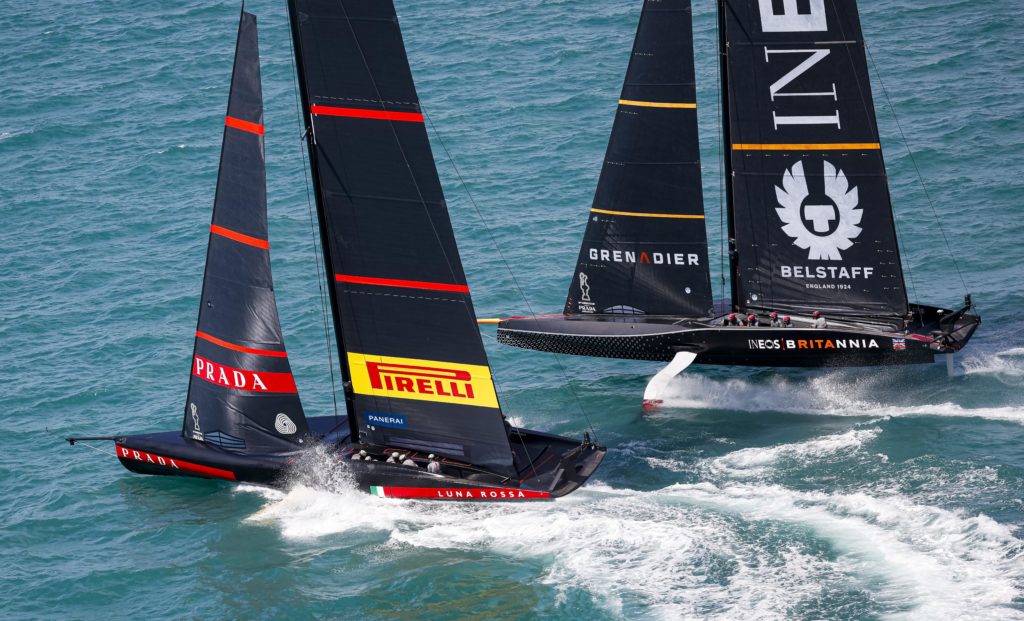
“The game is moving fast,” says American Magic coach, James Lyne, who’s still in Auckland and will remain so to see how the Prada Cup Finals play out. Declining my offer to wager which of the Prada Cup finalists he thinks has the goods to keep marching to the 36th America’s Cup, Lyne does, however, offer this perspective: If it’s sub-10 knots, Luna Rossa will be strong because they take off earlier. So, Luna Rossa’s pre-start game will be to get in tight to leeward and try to get Ineos off their foils.”
If either Jimmy Spithill or Francesco Bruni can hold Ineos in displacement mode and then be able to pull the trigger and take off sooner, it could end up a game of follow the leader. “That’s the name of the game when you think you have a takeoff advantage,” Lyne says.
So, a big thing in the prestart will be for Ainslie to evade getting hooked, and for Luna Rossa to execute it perfectly.
On the open racecourse, Lyne opines, if it’s light, Luna Rossa can have a lower entry speed a lower bottom speed into the maneuvers with their bigger foils. But there’s the big caveat: “What we knew eight days ago, you’d give it to Luna Rossa in sub-12 knots. They have a nice high mode upwind, but Ben’s boat has been in the shed for a long time.”
Luna Rossa has had plenty of time in the shed as well, as team director Max Sirena reminded everyone at Thursday’s press conference in Auckland ahead of the first day of racing on Saturday in Auckland. The changes he listed off included a new foil, a modified mast, new set of sails, a lot of development in the software on the boat, as well as improvements with the onboard communications.
“We’re ready to sail in any conditions,” Sirena said, later adding that the real enemy is themselves, not Ineos. That they need to avoid the mistakes of earlier races. Plain and simple.
While sailing days have been limited since the conclusion of the semifinals and the boats have undergone extensive modifications, the skippers have been logging plenty of hours in the simulator, validating changes to the boat and running through tactical situations and starting strategies. It’s yet another incredible development of the current Cup cycle. The simulator is part of each day’s pre-race routine.
“We do use the simulator for pre-race practice,” Ainslie says. “The wind conditions do play a factor into that, and the opponent. It’s part of the reconnaissance that we undertake of the opposition, part of our own development of the skills and understanding what the boat is capable of. It’s very close to the full picture, but it isn’t quite the full picture, so you have to be careful that it doesn’t convince you to pull a maneuver that you wouldn’t in reality be able to do. It’s a useful tool, but you have to understand in reality what the boat can do on the water as well.”
The forecast for the first weekend, says Regatta Director Iain Murray, is for light to moderate winds, with Saturday being borderline at the 6.5-knot limit. It’s been a long time since the America’s Cup World Series in December when Ineos struggled mightily in such conditions, but as we note at the top of the story, the game is moving fast and so is the development, and you can bet Ineos will have put the World Series in the distant past. They’ll be looking to start a tow from their chase boat, get on the foil and fight like hell to stay on it from start to finish.









